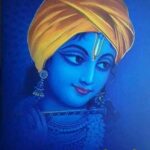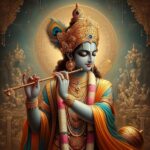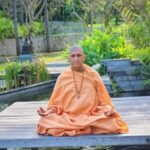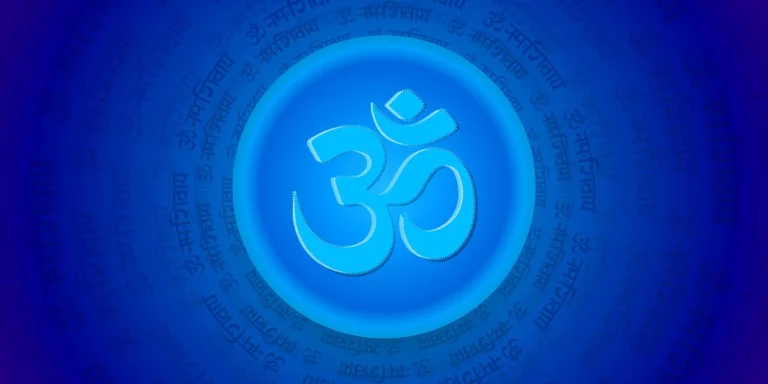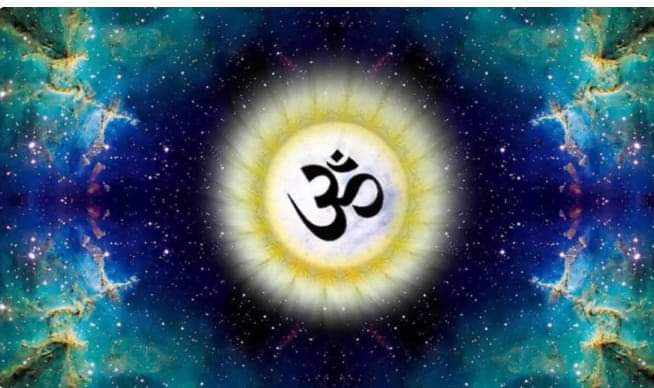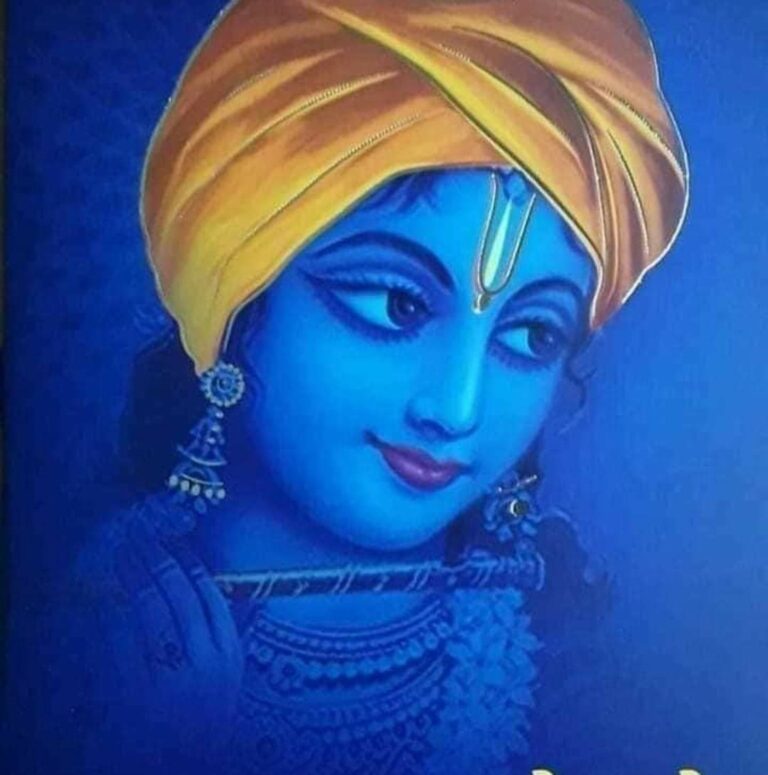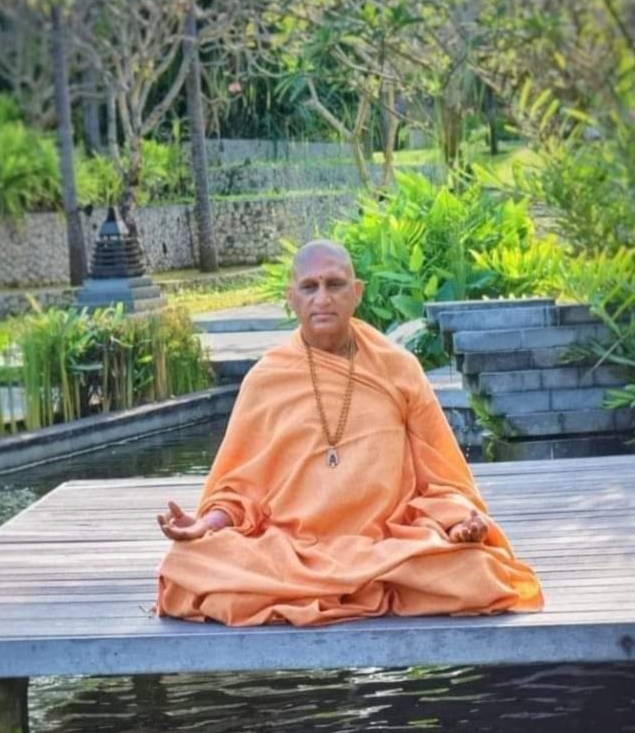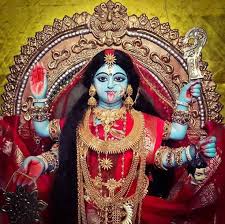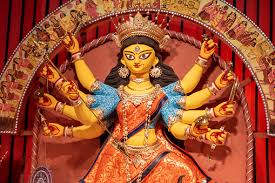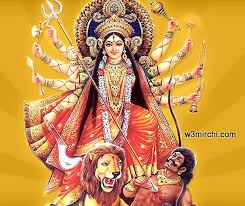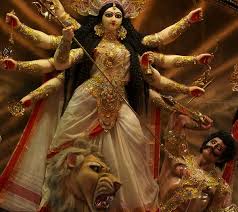।। श्रीहरि:।।*
[भज] निताई-गौर राधेश्याम [जप] हरेकृष्ण हरेराम
*चैतन्य-कालीन भारत*
भ्रातः कष्टमहो महान् स नृपतिः सामन्तचक्रं च तत्
पार्श्वे तस्य च सापि राजपरिषत् ताश्चन्द्रबिम्बाननाः।
उद्रिक्तः स च राजपुत्र निवहस्ते वन्दिनस्ताः कथाः
सर्वं यस्य वशादगात् स्मृतिपदं कालाय तस्मै नमः।।
महाप्रभु चैतन्यदेव का प्रादुर्भाव विक्रम की सोलहवीं शताब्दी के मध्य भाग में हुआ और वे लगभग आधी शताब्दी तक इस धराधाम पर विराजमान रहकर भावुक भक्तों को निरामय श्रीकृष्ण-प्रेम-पीयूष का पान कराते रहे। उस समय के और आज के भारत की तुलना कीजिये। आकाश-पाताल का अन्तर हो गया, राजनैतिक, सामाजिक, आर्थिक तथा धर्मिक सभी प्रकार की स्थितियों में घोर परिवर्तन हो गया। न जाने इस्लाम-धर्म का वह दौर-दौरा कहाँ चला गया, मुसलमान बादशाहों के ऐश-आराम की वे बातें इतिहास के निर्जीव पृष्ठों पर ही लिखी रह गयीं। हिन्दुओं की वह आचार-विचार की दृढ़ता, स्वधर्म के प्रति कट्टरता न जाने कहाँ विलुप्त हो गयी। उस समय लाखों सती स्त्रियाँ अपने पतियों के मृतक शरीरों के साथ हँसते-हँसते जीवित ही जल जाती थीं, इसे बीसवीं शताब्दी का महिलामण्डल कब स्वीकार करने लगा। न जाने एक रूपये के आठ मन चावलों की बात किसी ने वैसे ही लिख दी थी, क्या इसका अनुमान इस युग के मनुष्य कठिनता से कर सकेंगे? भक्तों का वह आदर्श प्रेम, कृष्णभक्ति की वह निष्कपटता, सेवा-पूजा में उतनी श्रद्धा और रति इन बीसवीं शताब्दी के साम्प्रदायिक पक्षपात से पूर्ण हृदयवाले भक्तों में कब देखने में आ सकती हैं। वे बातें तो समय के साथ ही विलुप्त हो गयीं। वह असली प्रेम तो उन महापुरुषों के साथ ही चला गया, अब तो साँप की लकीर शेष रह गयी है, उसे चाहे जैसे पीटते रहो। साँप तो निकल गया। वह तो उसी समय की रागिनी थी। महाकवि भवभूति ने ठीक ही कहा है-
समय एव करोति बलाबलं प्रणिगदन्त इतीव शरीरिणाम्।
शरदि हंसरवाः परूषीकृतस्वरमयूरमयू रमणीयताम्।।
अर्थात समय ही अच्छा और बुरा बनाने में कारण है। मयूरों का स्वर वर्षा में ही भला मालूम पड़ता है और हंसों का शरद्-ऋतु में ही। सचमुच समय की गति बड़ी ही विलक्षण है।
महाप्रभु, श्रीचैतन्यदेव का प्राकट्य जिस काल में हुआ, वह समय बड़ा ही विलक्षण था, उस युग को महान क्रान्ति-युग कह सकते हैं। उस समय सम्पूर्ण भारतवर्ष में चारों ओर राजनैतिक, सामाजिक और धार्मिक सभी प्रकार की घोर क्रान्ति मची हुई थी। उस समय तक प्रायः ऐसी मान्यता थी कि जो दिल्ली के सिंहासन पर विराजमान है, वही सम्पूर्ण भारत का सर्वश्रेष्ठ नरपति है।
दिल्ली का सिंहासन ही भारतवर्ष को दिग्विजय करने का मुख्य चिह्न था। उस समय दिल्ली के सिंहासन पर लोदी-वंश का अधिकार था किन्तु उस वंश के बादशाहों में अब वीरता-पराक्रम बिलकुल नहीं रहा था, लोदी-वंश अपनी अन्तिम साँसों को जैसे-तैसे कष्ट के साथ पूर्ण कर रहा था, अफ़ग़ान-सरदार लोदी-वंश का अन्त करने पर तुले हुए थे, इसलिये उन्होंने काबुल के बादशाह बाबर को दिल्ली के सिंहासन के लिये निमन्त्रित किया। बाबर-जैसा राज्यलोलुप बादशाह ऐसे स्वर्ण समय को हाथ से कब खोने वाला था। पंजाब का शासन दौलत खाँ उसका पृष्ठ-पोषक था, ईसवी सन् 1526 में बाबर ने भारत वर्ष पर चढ़ाई की और पानीपत के इतिहास-प्रसिद्ध रणक्षेत्र में इब्राहिम लोदी को परास्त करके वह स्वयं दिल्ली का बादशाह बन बैठा और उसके पश्चात् उसका पुत्र हुमायूँ दिल्ली के तख्त पर बैठा। इधर राजपूताने में राणा सांगा ने हिन्दूधर्म की दुहाई देकर बाबर के विरुद्ध बलवा आरम्भ किया। दोनों में घोर युद्ध हुआ, किन्तु मैदान बाबर के ही हाथ रहा, राणा सांगा परास्त होकर भाग गये।
पंजाब में भी छोटी-मोटी पचासों रियासतें बन गयीं। उनमें के पहाड़ी राजा तो प्रायः सभी अपने को स्वतन्त्र ही समझते थे। पहाड़ों में छोटी-छोटी बीसों स्वतन्त्र रियासतें थीं। इधर दक्षिण में विजयनगर का अन्त हो चुका था। बहमनी वंश का अन्त होते ही अहमदनगर, बीजापुर, गोलकुण्डा, बीदर और बरार- ये पाँच रियासतें एकदम अलग हो गयीं। बंगाल, बिहार, तिरहुत तथा उड़ीसा में भी छोटी-छोटी बहुत-सी मुसलमानी तथा हिन्दुओं की नयी रियासतें बन गयीं। इस प्रकार सम्पूर्ण भारतवर्ष में पूर्व से पश्चिम तक और उत्तर से दक्षिण तक एक भारी राजक्रान्ति मची हुई थी।
सैकड़ों छोटे-छोटे राज्य परस्पर में एक-दूसरे से लड़ते-भिड़ते रहते थे। सभी एक-दूसरे को नीचा दिखाने के लिये जी-जान से प्रयत्न करते। कभी तो किसी मुसलमानी रियासत को दबाने के लिये मुसलमानों में से दूसरे वंश के सरदार किसी पराक्रमी हिन्दू-राजा की सहायता से उस पर चढ़ाई कर देते और कभी किसी हिन्दू-राज्य को नष्ट करने के निमित्त दो मुसलमान-सरदार मिलकर उस पर धावा बोल देते। सम्पूर्ण भारत में कोई एकच्छत्र शासक नहीं था। वह राज्य-परिवर्तन का समय था, जिसमें भी बलपराक्रम हुआ, जिसके भी अधीन बलवान सेना हुई, वही उस प्रान्त का शासक बन बैठा और दिल्ली के बादशाह ने भी उसे उसी समय शासक स्वीकार कर लिया। ऐसी तो उस समय राजनैतिक परिस्थिति थी। अब सामाजिक परिस्थिति पर भी थोड़ा विचार कीजिये।
मुसलमान को यहाँ आये सैकड़ों वर्ष हो चुके थे, फिर भी हिन्दू अपनी कट्टरता पर ही तुले हुए थे, वे अब तक मुसलमानों के साथ किसी भी प्रकार का संसर्ग नहीं करते थे। जिनका तनिक भी मुसलमानों से संसर्ग हो जाता, जो भूलकर भी कभी मुसलमानों के हाथ की कोई वस्तु खा लेता, वह एकदम समाज से बहिष्कृत कर दिया जाता, फिर उसके उद्धार का समाज के पास कोई उपाय ही नहीं था। संस्कृत-विद्या का आदर था, पण्डितों की व्यवस्था की मान्यता थी, समाज में बस व्यवस्था के विरुद्ध कोई आवाज नहीं उठा सकता। ब्राह्मणों का फिर भी बहुत अधिक प्रभाव था, उच्च वर्ण वाले नीच वर्ण वालों के साथ अत्याचार भी कम नहीं करते थे, इसलिये नीच समझे जाने वाले करोड़ों मनुष्य हिन्दू-धर्म को अन्तिम तिलान्जलि दे-देकर इस्लाम-धर्म की शरण में जा रहे थे। बंगाल में इसका प्रचार और प्रभाव अन्य प्रान्तों की अपेक्षा अत्यधिक था।
इस प्रकार हिन्दू-समाज और प्राचीन वर्णाश्रम धर्म चारों ओर से छिन्न-भिन्न हो रहा था। धार्मिक स्थिति तो उस समय की महान ही जटिल थी। लोगों में यज्ञ-यागादिकों के प्रति जो शंकराचार्य के पश्चात् कुछ-कुछ रुचि हुई थी, वह तान्त्रिक और शाक्त-पद्धतियों के प्रचार के कारण फिर से लुप्त होती जा रही थी। वैदिक कर्मों के प्रति मनुष्य उदासीन बनते जा रहे थे। दिन-रात ‘जगत मिथ्या है, ‘जगत् मिथ्या है।’ इन वाक्यों को सुनते-सुनते लोग उकता-से गये थे। वे मस्ति की विद्या से ऊबकर कुछ हृदय के आहार की तलाश में थे। सतियों में भी वह पति-प्रेम नहीं रहा। लोकप्रथा को स्थिर रखने के निमित्त कहीं-कहीं तो अनिच्छापूर्वक जबरदस्ती विधवा स्त्री को उसके पति के साथ जला देते थे। निम्न श्रेणी के पुरुष भगवत्-प्राप्ति के अनधिकारी समझे जाते, उन्हें किसी भी प्रकार के धार्मिक कृत्यों के करने का अधिकार प्राप्त नहीं था। इस प्रकार सम्पूर्ण भारत एक नूतन धार्मिक पद्धति का इच्छुक था।
लोग नीरस पद्धतियों से ऊबकर सरस पद्धति चाहते थे, ऐसे समय में भरत के भिन्न-भिन्न प्रान्तों में बहुत-से महापुरुष एक साथ ही उत्पन्न हुए। उन सभी ने अपने-अपने प्रान्तों में वैष्णव-धर्म का प्रचार किया। इसलिये हम इस युग को वैष्णव-युग कह सकते हैं। सबसे पहले काशी में श्रीस्वामी रामानन्द जी महाराज हुए। वैरागी-सम्प्रदाय के ये ही आदि आचार्य समझे जाते हैं। इन्होंने भगवत-भक्ति में जाति-पाँति का बन्धन मेट दिया। इन्होंने सभी जातियों को समान रूप से भगवत्-भक्ति करने का अधिकार प्रदान किया। इनका सूत्र था- ‘हरि को भजै सो हरि का होय, जाति पाँति पूछै ना कोय।’ इनके बाद इनके बारह मुख्य शिष्य हुए जिनमें चमार, जुलाहे, छीपी, नाई आदि सभी अधिकांश में छोटी ही जाति के थे।
इन सबमें महात्मा कबीर बहुत ही प्रसिद्ध और परम उच्च स्थिति के महापुरुष हुए। इनके उच्च तत्त्वों का सम्पूर्ण भारतवर्ष के ऊपर समानभाव से प्रभाव पड़ा। ये महापुरुष परम ज्ञानी, आदर्श भक्त, अद्वितीय अनुरागी और सबसे बड़े निर्भीक थे। इस हेतु से प्रायः उच्च जाति के लोग डाह के कारण इनके द्वेषी बन गये। महात्मा रैदास, नामदेव जी आदि परमभक्त भी उसी काल में उत्पन्न हुए। इन सभी ने रूपान्तर-भेद से वैष्णव धर्म का ही प्रचार किया। कबीर-पंथ वैष्णव-धर्म का ही विकृत और रूपान्तरमात्र है। इधर उसी समय पंजाब में श्रीगुरु नानकदेव जी भी हुए, ये कबीरदास जी के समकालीन ही थे, इन्होंने भी सम्पूर्ण भारतवर्ष में बारह वर्षों तक भ्रमण तथा तीर्थयात्रा करके पंजाब के करतारपुर में ही आकर रहने लगे। इनके उपदेशों का लोगों पर बड़ा प्रभाव पड़ता था। इसलिये लाखों मनुष्य इनके उपदेशों को सुन-सुन इनके शिष्य अथवा ‘सिक्ख’ बन गये, आगे चलकर गुरु गोविन्द सिंह जी ने इन्हीं सबका एक ‘सिक्खसंघ’ ही बना लिया। इनके बड़े पुत्र श्री चन्द जी भी एक बड़े त्यागी, तेजस्वी और प्रभावशाली महापुरुष थे, उन्होंने विरक्तों को ही उपदेश दिया। इसलिये उनके अनुयायी अपने को ‘उदासी’ कहने लगे। उदासी एक प्रकार के संन्यासी ही होते हैं, असल में तो यह भी वैष्णव-धर्म का ही रूपान्तर है, केवल ये लोग शिखा-सूत्र नहीं रखते। वैसे उदासी-सम्प्रदाय में भगवत -भक्ति ही मुख्य समझी जाती थी।
अब तो उदासी-सम्प्रदाय भी विचित्र ही बन गया है। इधर दक्षिण में महात्मा समर्थ गुरु रामदास जी ने भी राम-भक्ति का प्रचार किया। उनके प्रधान शिष्य छत्रपति महाराज शिवाजी केवल राज्यलोलुप लड़ाकू शूरवीर ही नहीं थे, वे परम भागवत वैष्णव थे, उनके युद्ध का प्रधान उद्देश्य होता था। हिन्दू-धर्म-रक्षण और गौ-ब्राह्मणों का प्रतिपालन। इनके द्वारा महाराष्ट्र में भजन-कीर्तन और भगवत-भक्ति का खूब प्रचार हुआ। महाराष्ट्र के प्रसिद्ध सन्त श्रीतुकाराम जी महाराज भी इसी समय उत्पन्न हुए और उन्होंने अपनी अद्भुत भगवत-भक्ति के द्वारा सम्पूर्ण महाराष्ट्र देश को पावन कर दिया। ये विट्ठलनाथ जी के प्रेम में विभोर होकर स्वयं पद गा-गाकर नृत्य करते और स्वयं पदों की भी रचना करते थे। इनके भक्तिभाव से प्रसन्न होकर साक्षात विट्ठलनाथ जी ने इन्हें प्रत्यक्ष दर्शन दिया और वे सदा इनके साथ ही रहते थे। ये सशरीर वैकुण्ठ को चले गये। इनके द्वारा मराठी भाषा का ओर सम्पूर्ण महाराष्ट्र देश का बड़ा कल्याण हुआ। इधर काशी में भगवान श्रीवल्लभाचार्य जी भी उस समय विराजमान थे। काशी छोड़कर उन्होंने व्रजमण्डल का परम प्रसिद्ध पुण्यनगरी गोकुल पुरी में अपना निवास-स्थान बनाया।
शुद्धद्वैत-सम्प्रदाय के यही प्रधान आचार्य माने जाते हैं, ये श्री बालकृष्ण के उपासक थे। इनके द्वारा देश के विभिन्न स्थानों में श्रीकृष्ण 34 भक्ति का खूब ही प्रचार हुआ। इनके शिष्य अधिकांश धनी ही पुरुष थे। गुजरात, काठियावाड़ की ओर इनके सम्प्रदाय का अत्यधिक प्रचार हुआ। इनके सात पुत्र थे, उन सभी ने वैष्णव-धर्म का खूब प्रचार किया। इसी समय बंगाल में श्री चैतन्यमहाप्रभु का प्राकट्य हुआ। चैतन्य के पूर्व बंगाल की क्या दशा थी और चैतन्यदेव के द्वारा उसमें किस प्रकर परिवर्तन हुआ, इन सभी बातों का परिचय पाठकों को अगले अध्यायों में लग जायगा।
*क्रमशः अगला पोस्ट* [07]
••••••••••••••••••••••••••••••••••
[ गीताप्रेस,गोरखपुर द्वारा प्रकाशित श्री प्रभुदत्त ब्रह्मचारी कृत पुस्तक *श्रीचैतन्य-चरितावली* से ]
, Srihari:..*
[Bhaj] Nitai-Gaur Radheshyam [Chant] Harekrishna Hareram
*Chaitanya-time India*
Oh my brother it is a great pain that king and that feudal wheel
And by his side was that royal council, those faces like the moon.
The prince rose up and carried those stories in his hands
I offer my obeisances to Him whose control everything went to the stage of memory for time.
Mahaprabhu Chaitanyadev appeared in the middle part of the sixteenth century of Vikram and for almost half a century, sitting on this land, he continued to offer the pure Krishna-Prem-Piyush to the passionate devotees. Compare the India of that time and today. There was a difference between heaven and hell, there was a drastic change in all kinds of political, social, economic and religious situations. Don’t know where that era of Islam-religion went, those things of luxury of Muslim emperors remained written on the lifeless pages of history. Don’t know where the firmness of the Hindus’ ethics, fanaticism towards their own religion has disappeared. At that time lakhs of sati women used to burn themselves alive with the dead bodies of their husbands while laughing, when did the 20th century women’s circle start accepting this. Don’t know that someone had written about eight maunds of rice for one rupee, will the people of this age be able to estimate it with difficulty? That ideal love of the devotees, that sincerity of devotion to Krishna, that much devotion and love in service-worship can be seen in these full hearted devotees of the 20th century with communal bias. Those things disappeared with time. That real love went away with those great men, now the line of snake is left, keep beating it as you want. The snake has come out. She was the ragini of that time. The great poet Bhavabhuti has rightly said-
Time itself makes the strength and weakness of the bodies as if they were prostrate.
Let the swans’ voices in autumn and the peacocks’ voices be delightful.
That is, time is the reason for making good and bad. The voice of peacocks is known only in the rain and that of swans only in autumn. Really the speed of time is very strange.
The period in which Mahaprabhu, Sri Chaitanyadev appeared, was very unique, that era can be called the Great Revolution-Yuga. At that time, all kinds of political, social and religious revolutions were taking place all over India. Till that time it was generally believed that the one who sits on the throne of Delhi is the best Narpati of the whole of India.
The throne of Delhi was the main symbol of the conquest of India. At that time the Lodi-dynasty had the right on the throne of Delhi, but there was no valor-might in the emperors of that dynasty, the Lodi-dynasty was completing its last breaths with some kind of pain, the Afghan Sardar Lodi- He was hell-bent on ending the dynasty, so he invited Babur, the king of Kabul, to the throne of Delhi. When was a king like Babar going to lose such a golden time by hand. The rule of Punjab was supported by Daulat Khan, in 1526 AD, Babur invaded India and by defeating Ibrahim Lodi in the history-famous battlefield of Panipat, he himself became the emperor of Delhi and after that his son Humayun became the ruler of Delhi. Sitting on the throne Here in Rajputana, Rana Sanga started a rebellion against Babur by calling for Hinduism. There was a fierce battle between the two, but the field remained in the hands of Babur, Rana Sanga ran away after being defeated.
Fifty small princely states were also formed in Punjab. The hill kings among them almost all considered themselves independent. There were twenty small independent princely states in the mountains. Here in the south, Vijayanagara had come to an end. Ahmednagar, Bijapur, Golconda, Bidar and Berar – these five princely states were completely separated as soon as the Bahmani dynasty ended. In Bengal, Bihar, Tirhut and Orissa also many small new princely states of Muslims and Hindus were formed. In this way, there was a huge political revolution in the whole of India from east to west and from north to south.
Hundreds of small states used to fight with each other. Everyone tried their best to humiliate each other. Sometimes, in order to subdue a Muslim state, chieftains from other clans of Muslims would attack it with the help of a mighty Hindu king, and sometimes two Muslim chieftains would attack a Hindu state together in order to destroy it. . There was no single ruler in the whole of India. It was the time of change of state, in which there was a mighty act, under whom there was a strong army, he became the ruler of that province and the emperor of Delhi also accepted him as the ruler at the same time. Such was the political situation at that time. Now think a little about the social situation as well.
It had been hundreds of years since the Muslims had come here, still the Hindus were bent on their bigotry, they still did not have any association with the Muslims. Those who had contact with Muslims even a little bit, who even by mistake ate something from the hands of Muslims, he would have been completely ostracized from the society, then the society had no way to save him. Sanskrit-learning was respected, the system of pundits was recognized, no one can raise voice against the system in the society. Even then the Brahmins had a lot of influence, the high caste people did not even reduce the atrocities with the low caste people, that’s why crores of people, who were considered lowly, were going to the shelter of Islam-religion after paying the last tribute to Hinduism. Its promotion and influence in Bengal was more than in other provinces.
In this way the Hindu society and the ancient Varnashram religion were disintegrating from all sides. The religious situation at that time was very complicated. After Shankaracharya, there was some interest among the people towards Yagya-Yagadikas, it was disappearing again due to the promotion of Tantrik and Shakta-methods. Humans were becoming indifferent towards Vedic deeds. Day and night, ‘The world is false,’ ‘The world is false.’ People got bored listening to these sentences. They were in search of some heart food, bored with the knowledge of fun. That husband-love did not remain even in Satis. In order to keep the folk custom stable, at some places, unwillingly, the widow was forcibly burnt along with her husband. The men of the lower class were considered to be not entitled to God-realization, they did not have the right to perform any kind of religious acts. Thus the whole of India was desirous of a new religious system.
People were tired of monotonous methods and wanted juicy method, in such a time many great men were born simultaneously in different provinces of India. All of them propagated Vaishnavism in their respective provinces. That’s why we can call this era Vaishnava-yuga. First of all Shri Swami Ramanand Ji Maharaj happened in Kashi. These are considered to be the Adi Acharyas of the Vairagi sect. He broke the bond of caste and creed in Bhagvat-Bhakti. He gave the right to worship God equally to all castes. His formula was- ‘Hari ko bhajai so Hari ka hoy, jati panti poochhai na koi’. After this, he had twelve main disciples, in which Chamar, Julahe, Chhipi, Nai etc. were mostly of small castes.
In all these, Mahatma Kabir became very famous and a great man of supreme status. His high principles had an equal impact on the whole of India. This great man was supremely knowledgeable, ideal devotee, unique lover and most fearless. For this reason, people of upper castes often became their haters due to jealousy. Mahatma Raidas, Namdev ji etc. Supreme devotees were also born in the same period. All of them propagated Vaishnavism with different variations. Kabir-Panth is just a perversion and variation of Vaishnavism. Here at the same time Shri Guru Nanakdev ji also happened to be in Punjab, he was a contemporary of Kabirdas ji, he also traveled all over India for twelve years and started living in Kartarpur in Punjab. His teachings had a great impact on the people. That’s why lakhs of people became his disciples or ‘Sikhs’ by listening to his teachings, later on Guru Gobind Singh Ji made a ‘Sikh Sangh’ out of all of them. His elder son Shri Chand ji was also a great sacrifice, bright and influential great man, he preached only to the disinterested. That’s why his followers started calling themselves ‘Udasi’. Udasis are a type of sanyasis, in fact this is also a variation of Vaishnavism, only these people do not keep Shikha-Sutra. By the way, devotion to God was considered the main thing in Udasi sect.
Now even the Udasi sect has become strange. Here in the south, Mahatma Samarth Guru Ramdas ji also propagated devotion to Ram. His main disciple Chhatrapati Maharaj Shivaji was not only a kingly warrior warrior, he was the ultimate Bhagwat Vaishnav, the main objective of his war. Hindu-religion-protection and protection of cow-Brahmins. Bhajan-Kirtan and Bhagwat-Bhakti were widely promoted in Maharashtra through them. The famous saint of Maharashtra Shri Tukaram Ji Maharaj was also born at this time and he purified the entire country of Maharashtra by his wonderful devotion to God. Being engrossed in the love of Vitthalnath ji, he himself used to sing and dance and compose the posts himself. Pleased with his devotion, Sakshat Vitthalnath ji gave him a direct darshan and he always lived with him. This body went to Vaikunth. Marathi language and the entire country of Maharashtra were greatly benefited by them. Here in Kashi, Lord Shri Vallabhacharya was also sitting at that time. Leaving Kashi, he made his residence in Gokul Puri, the most famous holy city of Vrajmandal.
He is considered the head of the Shuddhwaita sect, he was a worshiper of Shri Balakrishna. Through them, devotion to Shri Krishna 34 was widely propagated in different places of the country. Most of his disciples were rich men. His community was widely publicized towards Gujarat, Kathiawar. He had seven sons, all of them propagated Vaishnavism a lot. At this time Sri Chaitanya Mahaprabhu appeared in Bengal. What was the condition of Bengal before Chaitanya and how it changed through Chaitanyadev, readers will get acquainted with all these things in the next chapters.
*next post respectively* [07]
••••••••••••••••••••••••••••••••••
[From the book *Sri Chaitanya-Charitavali* by Shri Prabhudatta Brahmachari, published by Geetapress, Gorakhpur]



